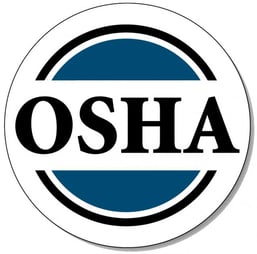 Ever since OSHA released the Combustible Dust National Emphasis Program in 2007 it has shown the importance of safely handling combustible dusts. As more information is learned about the properties of different combustible dusts OSHA has revised the original Combustible Dust NEP instructions. In April 2015, OSHA issued a memorandum to the NEP that gives more guidance on these combustion hazards.
Ever since OSHA released the Combustible Dust National Emphasis Program in 2007 it has shown the importance of safely handling combustible dusts. As more information is learned about the properties of different combustible dusts OSHA has revised the original Combustible Dust NEP instructions. In April 2015, OSHA issued a memorandum to the NEP that gives more guidance on these combustion hazards.
The current National Emphasis Program says that any dust creates a combustion hazard when it accumulates to 1/32nd inch or more across 5% of the floor area of the room. It does give a list of the major explosive dusts, but states that the hazard is not limited to just the list. The NFPA 654, the Standard for the Prevention of Fire and Dust Explosions, allows for this 1/32nd to vary depending on the bulk density and material of the dust. The new OSHA memorandum added the formula the NFPA uses to determine unsafe levels of dust.
This new formula in the NEP is based on both the layer depth of the accumulated dust, and the bulk density of the dust. Bulk density depends on multiple factors including type of material, dust particle size, and the shape of the dust particles. The new memorandum also gives information about how to test dusts for a combustibility risk to determine what levels can be allowed.
Many dusts are still explosive at the 1/32nd inch levels that were originally outlined, but now having that level of dust doesn’t necessarily mean a citation for combustible dust. OSHA has stated that they don’t think this memorandum will change the outcome of most inspections, since the situations where they do give dust hazard citations are typically significantly higher than the limits outlined in the NEP.
This memorandum comes as the NFPA is preparing a new NFPA standard called 652, Fundamentals of Combustible Dust, set to be issued this summer. OSHA has been waiting for this new NFPA Standard to update their combustible dust NEP with these new instructions.

